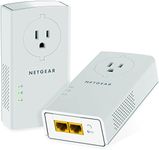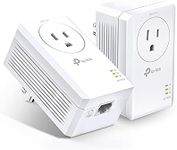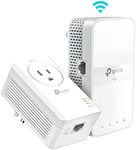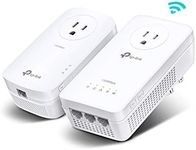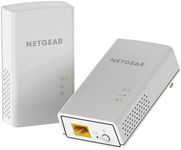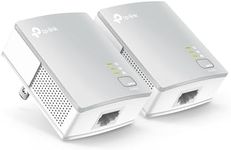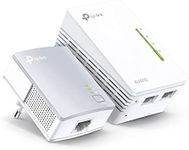Buying Guide for the Best Powerline Adapters
Powerline adapters are a great solution for extending your home network using your existing electrical wiring. They are especially useful when Wi-Fi signals are weak or unreliable in certain areas of your home. When choosing a powerline adapter, it's important to understand the key features that affect performance and compatibility with your needs. By focusing on the right specifications, you can ensure a stable and fast network connection wherever you need it.Speed Rating (Mbps or Gbps)The speed rating of a powerline adapter tells you the maximum data transfer rate it can support, usually measured in megabits per second (Mbps) or gigabits per second (Gbps). This is important because it determines how fast your network connection will be between rooms. Lower speed ratings (like 500 Mbps) are suitable for basic web browsing and streaming in standard definition, while mid-range speeds (around 1000 Mbps or 1 Gbps) are better for HD streaming and online gaming. Higher speeds (over 1 Gbps) are ideal for 4K streaming, large file transfers, or if you have multiple users. To pick the right speed, think about what you’ll be using the connection for and choose a speed that matches your internet activities.
Number of Ethernet PortsThe number of Ethernet ports on a powerline adapter determines how many wired devices you can connect directly to it, such as computers, smart TVs, or gaming consoles. Some adapters have just one port, which is fine if you only need to connect a single device. Others offer two or more ports, which is useful if you want to connect multiple devices in the same room. Consider how many devices you want to connect in the area where you’ll use the adapter, and choose a model with enough ports to meet your needs.
Pass-Through Power SocketA pass-through power socket means the adapter has a built-in electrical outlet, so you don’t lose a wall socket when you plug it in. This is important in rooms where power outlets are limited. If you need to keep using the socket for other devices, look for an adapter with this feature. If you have plenty of outlets, this may not be as important for you.
Wi-Fi CapabilitySome powerline adapters also include built-in Wi-Fi, allowing you to create a new wireless hotspot in another part of your home. This is useful if you want to improve Wi-Fi coverage in areas where your main router’s signal is weak. If you only need a wired connection, you can skip this feature. But if you want to boost wireless coverage, look for a model with Wi-Fi capability.
HomePlug Standard CompatibilityPowerline adapters use standards like HomePlug AV, AV2, or G.hn to communicate over your electrical wiring. Compatibility is important if you plan to use multiple adapters together, as they need to support the same standard to work properly. HomePlug AV2 and G.hn are newer and offer better speeds and reliability. If you’re starting fresh, choose the latest standard for better performance. If you already have adapters, make sure any new ones are compatible with your existing setup.
Range and CoverageThe range of a powerline adapter refers to how far the signal can travel through your home’s wiring. This is important in larger homes or if you need to connect rooms that are far apart. While most adapters work well within a typical home, performance can drop over long distances or if your wiring is old. If you have a large or multi-story home, look for adapters that mention extended range or improved coverage, and consider the layout of your electrical circuits.
